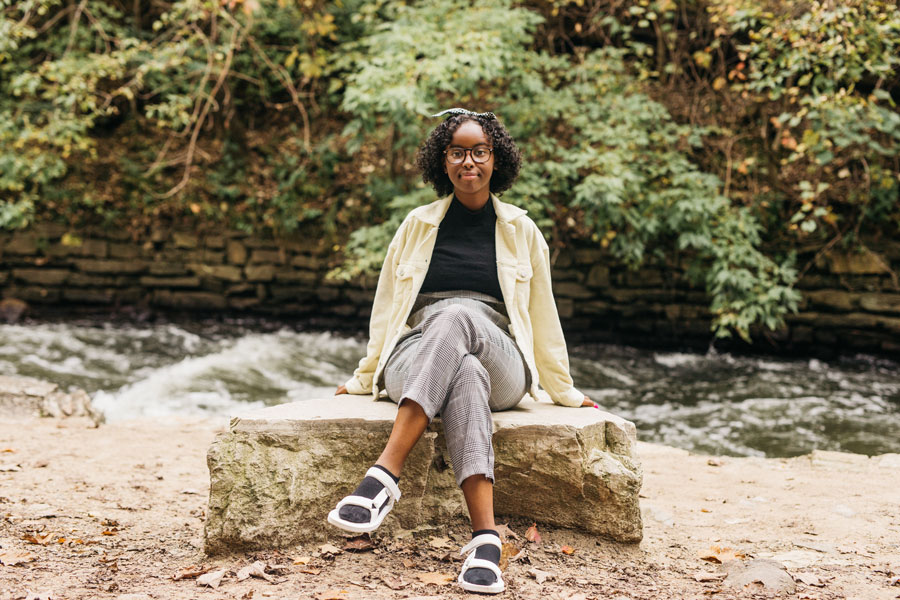
This story was written for Teva. Photos by Bethany Schrock.
On September 20, 2019, thousands of students across the globe skipped school. It wasn’t some Ferris Bueller-style anomaly, but instead a question posed to world leaders: “What’s the point of going to school if there won’t be a planet to live on?”
Among them was ISRA HIRSI. You may recognize her as the daughter of freshman congresswoman Ilhan Omar, but you’d be remiss not to understand her in her own light as one of the most prominent black female faces of the climate movement. Isra is the Executive Director of the U.S. YOUTH CLIMATE STRIKE, the mass student walk-out that took place during the last weeks of September.
Growing up in Minneapolis, Minnesota, Isra witnessed extreme snow conditions, the water crisis in Flint, Michigan, and pipelines being constructed through her state, all of which prompted her to join her school’s green team, iMatter Minneapolis, and eventually MN Can’t Wait, a youth coalition of climate organizations. Then one day, in true Gen Z form, she got a message on Instagram: would she help a small team of teens organize the first global Youth Climate Strike, inspired by Greta Thunberg?
In August 2018, a ninth-grade girl named Greta Thunberg skipped school to stand on the steps of Swedish Parliament holding a handmade black-and-white sign. In bold capital letters, the sign read SKOLSTREJK FOR KLIMATET (“School Strike for Climate”). It was a moment that redefined the climate justice movement and spurred demonstrations from millions of teens around the globe, all of them demanding their country’s leaders take action against climate change. In the past year, Greta’s work has been inspiring and mobilizing an army of Gen Z climate warriors, digitally connected and determined to burst the climate crisis’ “bubble of denial.”
As I dive into my own work documenting the effects of climate change, I feel inspired and further empowered by what’s being done by other activists — especially and specifically by women and girls — around the globe to bring education, awareness, and radical change to fruition. This year’s theme for International Day of the Girl is “Unscripted and Unstoppable,” and to honor the girls of the climate movement, I caught up with Isra days before the climate strike to have an unscripted discussion about her unstoppable work.
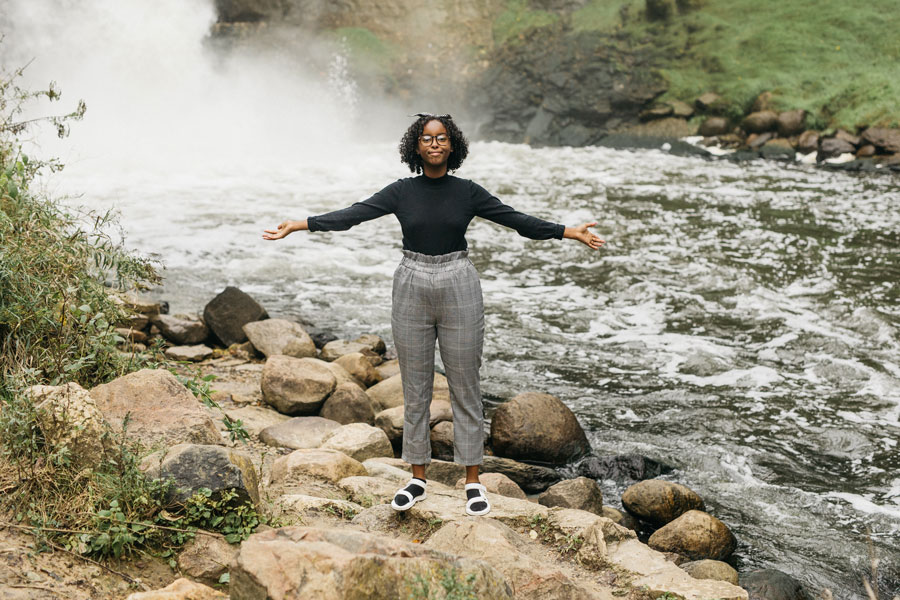
You’re in crunch time for the climate strike right now. How are you feeling?
I’m definitely really, really stressed. I’m taking college classes on top of high school, so trying to balance those is a lot. There are so many organizers, so many things that need to be done.
No pressure.
I’m probably going to take my drivers test tomorrow morning, too!
Where will you be for the strike?
I’ll be in Minnesota, at the capitol in St. Paul.
Help me understand how you mobilize strikers, because when I was your age we didn’t have access to the same tools. I mean, we were on Myspace.
It depends on the scale of what I’m organizing. If I’m doing something in my own city, I wouldn’t rely on social media as heavily. When it comes to a national scale, being from Minnesota, it’s harder to find people who live in other areas so I’ll rely on it. I think that for this generation, organizing has become more accessible to folks because you can do it digitally. Social media has become a way to reach people from all backgrounds. But it’s still hard because not everyone is on social media, especially immigrant communities.
Is it important to you that your political representatives have a presence on social media then? You’re still two years away from being able to vote, but you’ve obviously got your eye on what’s happening in Washington, D.C.
It does matter. It allows young people to understand what’s going on. I can subscribe to an email list, but I might not understand it — Twitter has much more accessible language. I can’t just go on the government websites and read about bills [politicians] are writing and such. So seeing TheHill.com articles show up on Twitter or seeing bullet points about a politician’s plan on Instagram helps me recognize, ‘Oh, this person is doing something I should check out’ when I may not otherwise.
Let’s talk about the U.S. Youth Climate Strike. The youth coalition has a pretty robust list of demands from the United Nations and world leaders. Of them, which would you like to see prioritized?
I would say climate refugees, especially with the amount of natural disasters happening in the islands and in Asia and Africa. The climate crisis is becoming a bigger issue every year, and it will result in more refugees — look at Bangladesh, Mozambique, even Brazil. We have to recognize that these world leaders have an obligation to, one, make sure their citizens are being protected and, two, refugees have safe places to go.
I remember seeing an article recently about folks impacted by the hurricane in the Bahamas getting on boats, but those without visas weren’t allowed to come into the United States. That was really problematic — these people have no other options. Their houses are gone. A president denying them from entering this country is something that’s really flawed to me. I want to see world leaders and UN officials making sure they are fighting for these refugees’ rights.
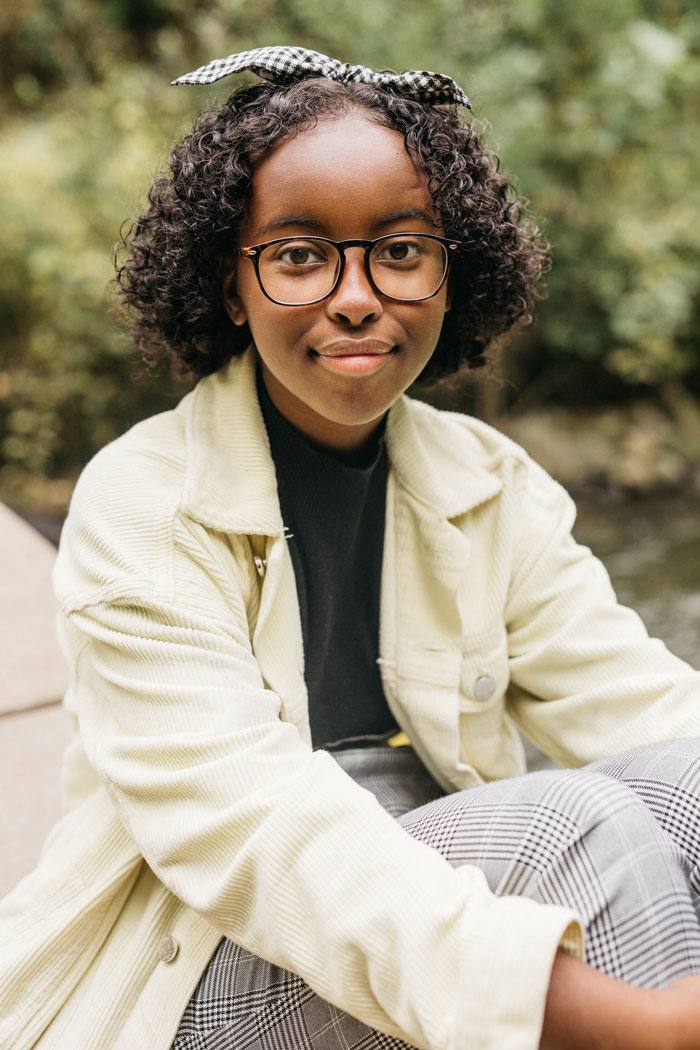
But you’re not just organizing strikes. This year you asked the Democratic National Committee to host a climate debate. They ultimately said no, but your work did result in CNN hosting a Climate Crisis Town Hall with the Democratic presidential primary candidates. Are you feeling frustrated or satisfied with that outcome?
We are glad at least something happened. We can all agree that a climate forum is a good compromise. But there is some disappointment that we couldn’t see the candidates discussing each other’s plans and laying out what they’ll prioritize. A forum is essentially candidates bragging about themselves for a certain amount of time, and about how good their plans are. And, of course, the audience gets to ask questions but they are pre-approved and the candidates are prepared. So you don’t get to have the interaction you want to see. It’s a win, but it could have been better.
A lot of your work centers on intersectional environmentalism. What does that mean to you as a black Muslim woman?
I recognize that I’m one of the first black faces you’ll see in climate leadership, which is sad in and of itself. As a person of color who has a lot more privilege than some other black and brown folks, it was easier for me to get involved in climate organizing. I think it’s important to use the voice I have to make sure I lift up other people who are directly being impacted by climate change.
There are so many people I know who live in communities next to factories, where they have poor air quality and their asthma rates are through the roof. Minnesota has a pipeline going straight through indigenous treaty lands, so making sure discussions about indigenous rights are brought up is important to me. It’s not an obligation but definitely a responsibility to use the power to try my best to always bring these issues up because I recognize a lot of environmental groups don’t talk about them, or they say they will but their spaces are completely white-dominated. Bringing up these conversations is one way I can use my identities for the betterment of the movement.
In order to get people into climate activism, you have to meet people where they’re at… A lot of communities don’t see how big of a deal the climate crisis is or how it impacts them. Or they do know, but they don’t know how to get connected and involved. You have to communicate with people in different communities to help diversify spaces.
“Climate grief” is a very real thing, and certainly something I’ve experienced more of lately. Do you have those feelings and how do you deal with them?
I try to remain as hopeful as possible when it comes to the climate crisis. I also know there are a lot of people out there doing the same work as me, and I know that we’re having an influence in some ways. Not all political leaders are listening, but a few are, and seeing Bernie’s plan, seeing the Green New Deal…there is a change. I also see so many people coming out to events. I believe there’s a chance to turn this around. I do get upset and frustrated because it can feel like I don’t have much power.
I’m curious what your school thinks about the climate strike.
I don’t communicate with my teachers about the specific work I do. I never told a teacher about organizing until March 15th, when I decided it was finally time to tell them why I’d missed so much school. I’m pretty positive most of my school knows, but only because they look at my social media. My principal is supportive of the strike and my teachers are supportive of walk-outs. I do live in a pretty progressive city.
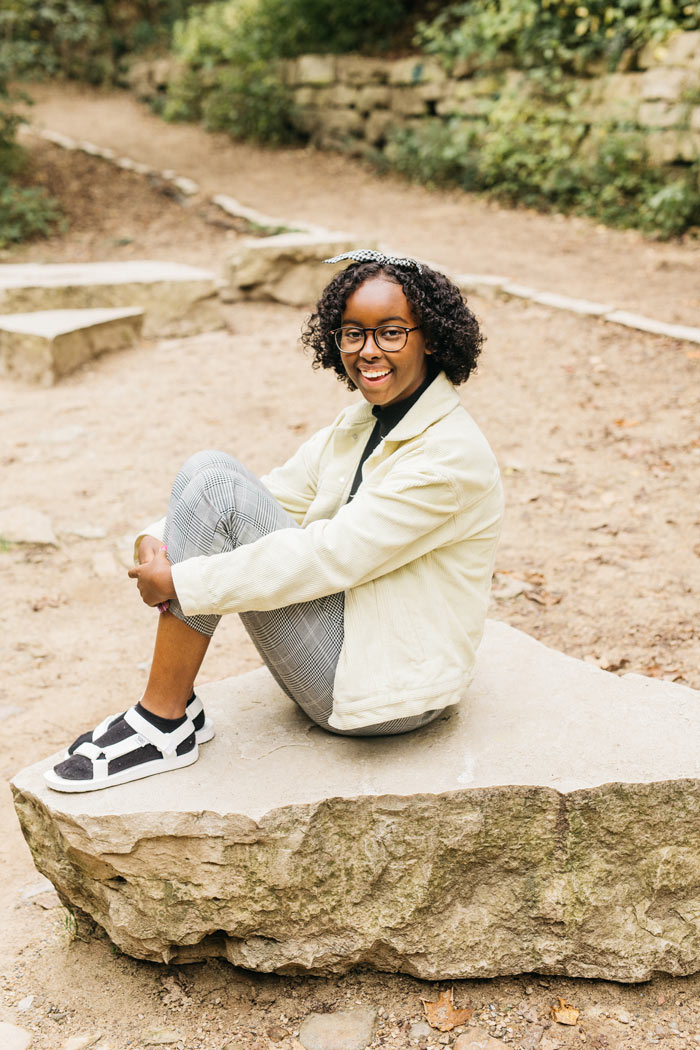
What about the other kids at school?
A lot of kids at my school are aware and know climate change is a problem, but a lot of them are very apolitical and can be a little lazy. Sometimes science teachers give extra credit to people who attend. We’re hoping to get a few hundred kids to come from my school.
Your generation can have this reputation for being lazy or self-absorbed, but then there’s this other side to your reputation that believes in a politically active and highly motivated age group. What do you think about your generation?
Every generation has a group of folks that don’t care — that’s inevitable. Overall, I think we’re way more politically involved and aware. We are way more mobilized, and at younger ages, too. You see kids as young as 10 out on the streets. We’re also becoming way more progressive and I know we’re doing a really good job at creating social change.
How can someone like myself be a stronger ally?
By making sure to uplift young voices as well as attend the strikes; take time off work if you have the ability to. Attempt to strike, educate those at your workplace, your family, or your community about the climate crisis and let them know how it affects them. I think education is a really important tool, and that’s how you get more people to turn out.
We’re diving deep into your work, but you’re 16. What do you do for fun?
I don’t really do a lot of things for fun. I used to do theater but I quit my sophomore year due to organizing — I didn’t have time. I do debate, I’m a policy debater. That takes up a lot of my time, especially on weekends. I don’t know, that’s it.
Wow, that totally dismantles the myth that your age group can care about climate strikes only because you have all this free time and no career or family to worry about.
It takes up a lot of my time.
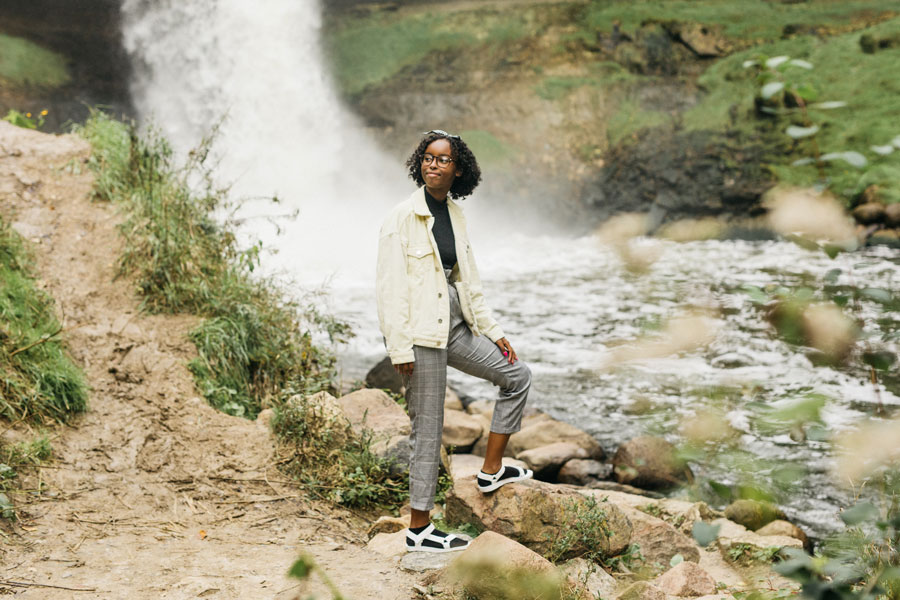
You still manage to cultivate some pretty killer personal style. Do you try to shop sustainably?
I’m really into color. I wear a lot of turtlenecks and jeans. I try to match from head-to-toe almost perfectly every day — that’s my thing. I’ll match my hair to my outfit, to a T. I used to thrift a lot, and buy my clothes through this swap at my school — it’s like DEPOP but via high school.
The theme for this year’s International Day of the Girl is “Unscripted and Unstoppable.” How do you embody that idea?
I would say that my own existence feels like a superpower. Existing as one of the few black female faces in the climate movement, I know I’m creating space not only for myself but for people like me, and that gives me the power to be unstoppable. Recognizing that I’m giving hundreds of younger people the ability to take power into their own hands makes me unstoppable.
You are a role model for me and many other women and girls. What’s your advice for someone looking to get into this type of work?
It’s extremely hard. If you’re having trouble getting involved, you aren’t alone — hundreds of thousands of people struggle to get to that point. Your voice matters. Recognize you are allowed to take up space, and to speak up. You are allowed to say your opinion, and no one gets to tell you otherwise.
